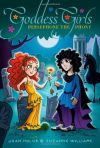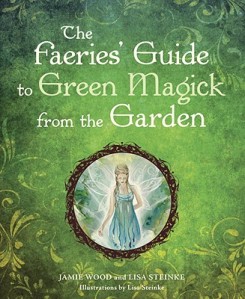Goddess Girls is a cute series for young girls about goddesses from Greek mythology, namely Persephone, Athena, Aphrodite and Artemis. This is the first book I've read in the series and I was drawn to it because I've always liked the story of Persephone and Hades, and though the story is called 'The Rape of Persephone' I've always considered it to be more of a forbidden love story than Hades taking her against her will.
The goddesses in this series are 12, the supposed age of the potential reader and all of the gods and goddesses interact mostly at god- school, with Zeus as the principle. Persephone is a shy girl and always goes along with what her friends want to do or are interested in instead of saying what she would like to do, and because she is always going along with her friends and hides her real feelings she starts to think of herself as being phony. Then one day after school, Aphrodite convinces Persephone and Athena to go shopping with her. She is convinced to buy a ball of yarn (among other things) and on her way home she drops the yarn and it unravels and falls down to earth to a cemetery. Persephone goes after it and when she gets to the cemetery she is intrigued by it, as she has never been to one, and she finds that she feels very calm in this place. Then, the ground shakes and opens up and out comes a young Hades on a black stallion. They get to talking and Persephone finds that Hades is quite a nice person and inspires her to say what she's really feeling, but alas the meeting is interrupted by Demeter, Persephone's mother, who gets angry at Persephone for not telling her where she had gone. As the story progresses, Persephone and Hades have a few more chance encounters (almost every time someone warns her away from him) and Persephone starts feeling like she should stand up for herself more. Aphrodite asks her to go shopping again and this time she refuses and goes to see Hades instead, but on the way there she sees a pomegranate orchard and stops in for a bite. Hades comes up and they have some fun spitting the seeds but as it turns out her friends were spying on her and tell her mother what she's been up to. Persephone is angry at everyone for this invasion of privacy and runs away to the underworld with Hades (instead of being dragged) and tells him that she's tun away and wants to live with him. In contrast to the myth, he actually sends her back however, telling her that the underworld isn't a place for her and that her mother would be worried. Persephone has a talk with her mom and then seeks Hades out at school the next day and he asks her to go to a dance.
It's not exactly the myth, but the main pieces are in the right place. They meet on earth, and Persephone's making a daisy chain at the time, so she's still interacting with nature at some level when he meets her. The pomegranate is still the turning point in their relationship, after that she begins to act more in her own interest instead of going along with what other people say, and after that point they end up getting together. And she did go down into the underworld, she was just sent swiftly back to mount Olympus. Overall it was an enjoyable read and a fun interpretation.. and maybe an introduction for some kids, to some of the more well-known female goddesses in Greek mythology. I haven't read any of the other books, but this one was pretty good so I would think those are ok as well.
Thursday 24 February 2011
Saturday 19 February 2011
The Faeries' Guide to Green Magick from the Garden by Jamie Wood andLisa Steinke
This is a really interesting book on herbs and other plants. The book is not more than 200 pages so is obviously not as extensive as other herbal guide, but it's still very interesting.
The book states that a faerie is the life force of nature, plant energy if you will. The authors come to this conclusion because they say faeries can be found in nature, like dryads in trees, gnomes in hills, etc. The purpose of this book is essentially to merge meditation or a spiritual mentality with gardening, or what the authors call 'green gardening'.
Each herb's description is approximately 2 pages long and is accompanied with a picture of a faerie. What I really like about this book is that it isn't all spiritual or all medical, but it's a combination of both. The authors provide a short description of the plant and how to use/ store/ gather/ preserve it. Then they provide a short historical or mythological context for the plant and it's healing uses, home remedy like stuff. Then, after that, they give you a little recipe you can use the herb in or a recipe to make a product of some sort. As the book is not very long the author's do not get too deep into every plant and they give different information on different plants, but it's still a very interesting read.
The book states that a faerie is the life force of nature, plant energy if you will. The authors come to this conclusion because they say faeries can be found in nature, like dryads in trees, gnomes in hills, etc. The purpose of this book is essentially to merge meditation or a spiritual mentality with gardening, or what the authors call 'green gardening'.
Each herb's description is approximately 2 pages long and is accompanied with a picture of a faerie. What I really like about this book is that it isn't all spiritual or all medical, but it's a combination of both. The authors provide a short description of the plant and how to use/ store/ gather/ preserve it. Then they provide a short historical or mythological context for the plant and it's healing uses, home remedy like stuff. Then, after that, they give you a little recipe you can use the herb in or a recipe to make a product of some sort. As the book is not very long the author's do not get too deep into every plant and they give different information on different plants, but it's still a very interesting read.
Subscribe to:
Posts (Atom)

